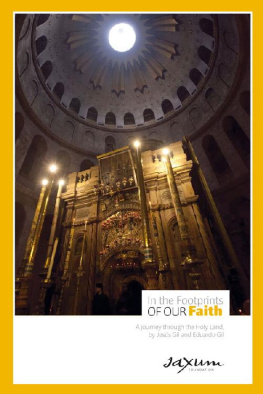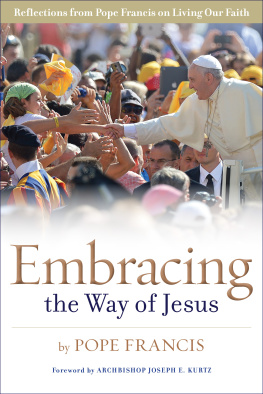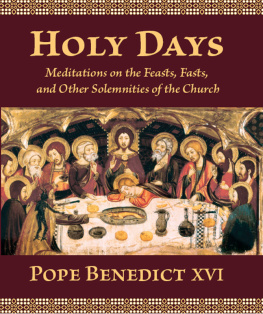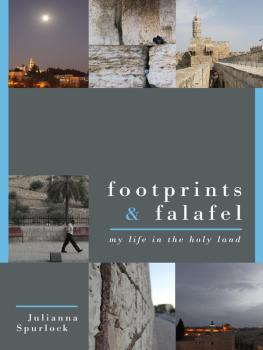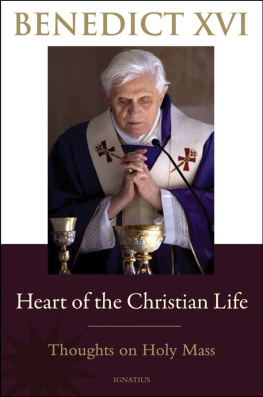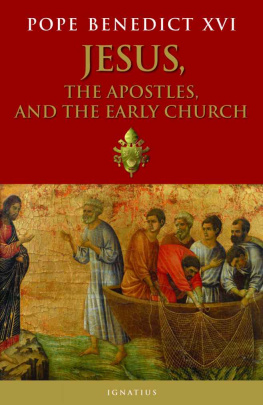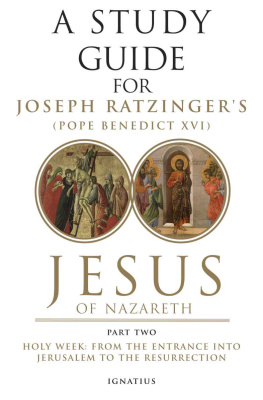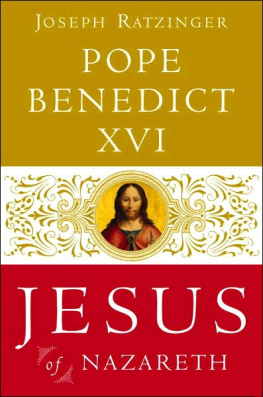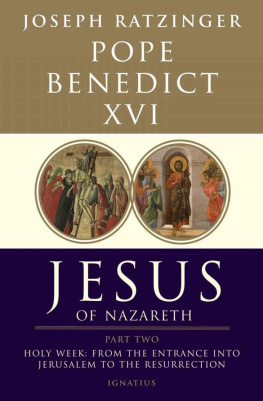Introduction
As we call to mind the Word of God who became flesh in the womb of Mary of Nazareth, our heart now turns to the land where the mystery of our salvation was accomplished, and from which the word of God spread to the ends of the earth. By the power of the Holy Spirit, the Word became flesh in a specific time and place, in a strip of land on the edges of the Roman Empire. The more we appreciate the universality and the uniqueness of Christs person, the more we look with gratitude to that land where Jesus was born, where he lived and where he gave his life for us. The stones on which our Redeemer walked are still charged with his memory and continue to cry out the Good News. For this reason, the Synod Fathers recalled the felicitous phrase which speaks of the Holy Land as the Fifth Gospel. [...]
The Holy Land today remains a goal of pilgrimage for the Christian people, a place of prayer and penance, as was testified to in antiquity by authors like Saint Jerome. The more we turn our eyes and our hearts to the earthly Jerusalem, the more will our yearning be kindled for the heavenly Jerusalem, the true goal of every pilgrimage, along with our eager desire that the name of Jesus, the one name which brings salvation, may be acknowledged by all (cf. Acts 4:12).
These words from the apostolic exhortation Verbum Domini are an appropriate introduction to this series of articles about the Holy Land, which began as a way to celebrate the Year of Faith opened by Pope Benedict XVI on October 11, 2012, and closed by Pope Francis on November 23, 2013. The original texts appeared over those two years in Crnica, a monthly publication for the faithful of the Prelature of Opus Dei, under the title "In the Footprints of Our Faith." Here we present a compilation of these articles, sponsored by the Saxum Foundation, with only minor changes.
We were inspired by St. Josemarias suggestion (repeated many times) to immerse ourselves in the Gospel, to take part personally in every scene in a way that our lives would never be the same after reading the Word of God. This is why, in addition to recent historical and archaeological investigations, we draw primarily from the writings of those who can best guide us: the Fathers of the Church, who have passed on our Tradition; the Magisterium and the Liturgy of the Church; and, of course, the founder of Opus Dei. Blessed
St. Josemaria had always wanted to make a pilgrimage to the Holy Land and dreamed of starting various apostolic initiatives there which would help the Church. He was never able to fulfill this dream, but Blessed Alvaro del Portillo, his most faithful son who was united to him in everything, was able to make a pilgrimage to the Holy Land from March 1422, 1994. On the morning of March 23rd, only a few hours after Blessed Alvaros return to Rome, God called him to Heaven, after he had celebrated his last Mass in the Church of the Cenacle. Keeping in mind the faithful of Opus Dei, its cooperators, and those with a devotion to Blessed Alvaro, there are references to his final days in the Holy Land scattered throughout the text.
1. Nazareth: Basilica of the Annunciation
The room in which the Blessed Virgin received tidings from the Angel Gabriel is venerated in Nazareth. Blessed Alvaro del Portillo celebrated Mass in this cave.
Two thousand years ago, while Rome shone in splendor, many other cities existed on the shore of the Mediterranean that did not share the importance of the Empires capital, but enjoyed prosperity and had played major roles in some of the most glorious events of history: Athens, Corinth, Ephesus, Syracuse, Alexandria, Carthage... and in ancient Palestine, the holy city of Jerusalem and the flourishing cities of Caesarea and Jericho.
In contrast, Nazareth was a village entirely unknown to the vast majority of the worlds inhabitants. A handful of poor homes, partially excavated into the rocky promontories in Lower Galilee, Nazareth had almost zero importance even within its own region. Sepphoris, where nearly all commercial activity of the area took place, was two hours away by foot, and had well-constructed buildings and Greek-speaking inhabitants who were involved in the Greco-Roman intellectual world. Nazareth, on the other hand, was inhabited by a small number of families who only spoke Aramaic, about a hundred in total. Most would have worked in agriculture and livestock, but there were also craftsmen like Joseph, who with his work ethic and talent had plenty of business amongst carpenters and blacksmiths.
In that village, in a remote corner of the earth, where no one would ever have thought of looking for someone who was going to change the course of history, the most incredible creature who ever lived was leading an absolutely ordinary life.
Hail Mary
In the sixth month, the angel Gabriel was sent from God to a town of Galilee called Nazareth, to a virgin betrothed to a man named Joseph, of the house of David, and the virgins name was Mary.
According to an ancient tradition passed on by some Fathers of the Church, some relations of Jesus were still living in Nazareth in the 2nd century, and they had preserved both the room in which the Angel Gabriel visited Our Lady, and the house of the Holy Family. They had even preserved the well where Our Lady went to draw water, just as other women in the town. There are written testimonies of pilgrims who visited the house in Nazareth in the 4th century when it was already a place venerated by Christians, complete with an altar.
In the 5th century, a Byzantine church was built upon the site, which the Crusaders would find in ruins when they arrived at the end of the 11th century. The Norman knight Tancred, Prince of Galilee, ordered a new basilica to be constructed over the grotto, but the new building was again destroyed in the invasion of Sultan Baibars in 1263.
In 1620, an emir handed over of the ruins of the basilica and grotto to the Franciscans, and in 1730, they obtained permission from the Ottoman Sultan to build a new church there. The edifice was enlarged in 1877, and then completely demolished in 1955 to make way for the current basilica, which is the largest Christian shrine in the Middle East.
Before building the new basilica, the Studium Biblicum Franciscanum undertook an archaeological investigation of the site, and among other things, they discovered a building used for worship which had Christian graffiti (signs of Christian devotion) on it, including an inscription in Greek, XE MAPIA (Hail Mary), and one which mentions the holy place of M. Both the original building and the graffiti predate the 3rd century, and may correspond to the late 1st or early 2nd century.
These findings were supplemented by studies done in the Holy House of Loreto, Italy, between 1962 and 1965, which showed the houses proportions to correspond to those of a building attached to the Grotto of Nazareth. Furthermore, it was found that the graffiti on the walls of the house preserved in Loreto were of the same style and age as those in Nazareth. These findings, together with existing written sources and archaeological remains, explain why it is historically consistent that, both in the Basilica of Nazareth and in the sanctuary of Loreto, pilgrims can contemplate with gratitude the physical place where the Word was made flesh: Hic Verbum caro factum est.
I want it when You want it!
When Blessed Alvaro del Portillo went to pray and celebrate Mass at the Basilica of the Annunciation in Nazareth on March 15, 1994, he was overcome with emotion. Bishop Javier Echevarria remembered that, days afterwards, Bl. Alvaro was so happy that he had been able to contemplate from up close the places where Christ, his great love, had been, had lived.

